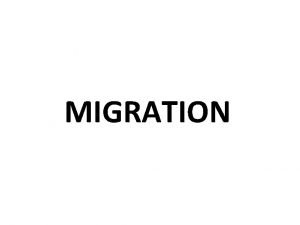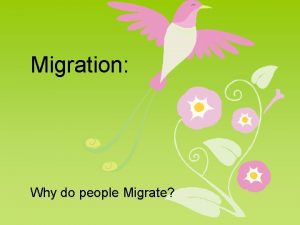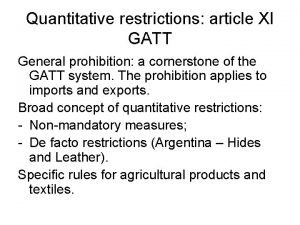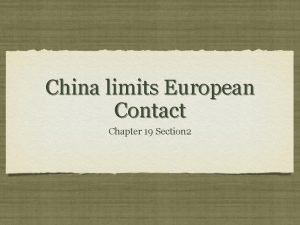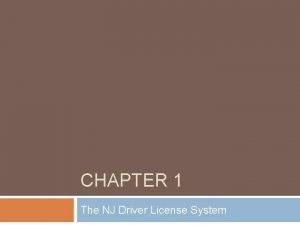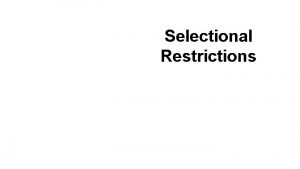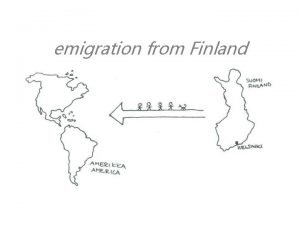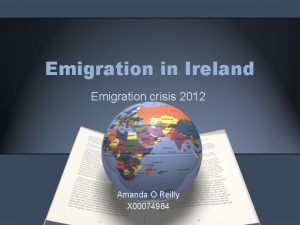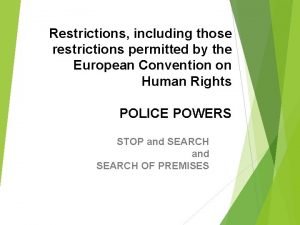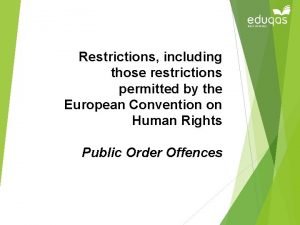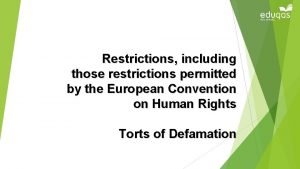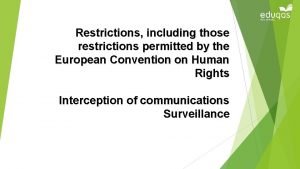Immigration and Emigration Policies and Restrictions Immigration Policy










- Slides: 10

Immigration and Emigration Policies and Restrictions

Immigration Policy and Law • An immigration policy is one that deals with the transit of persons across a political border into another country. Specifically, policies focus on persons who intend on working and staying in that new country. • Policies are formed based on a variety of considerations such as: economy/trade, politics, demographics and culture of both the new country and the country of origin. • Immigration Law: refers to individual government’s policies controlling the occurrence of migration within their country.

Immigration Restrictions Naturalization Act of 1790 • Residents of the USA who had immigrated were able to become citizens if their father was a resident. This was only extended to “free white persons of good moral character” only. Chinese Exclusion Act of 1882 • An act created to ban the immigration of Chinese into the USA. Many Chinese had immigrated in the early-mid 1800’s during the Gold Rush. As gold supplies diminished, competition for other jobs increased and sparked animosities between the Chinese and other West Coast settlers. • Canada followed suit with a similar act in 1923 banning the immigration of all Chinese with the exception of: merchants, diplomats, students and special cases.

A political cartoon from 1882, showing a Chinese man being barred entry to the "Golden Gate of Liberty". The caption reads, "We must draw the line somewhere, you know. "

Fear of “Foreigners” • Xenophobia: The fear of “foreigners”. This led to the creation of many policies in the US and Canadian immigration acts that prevented certain people/races from entering into both countries. The Voyage of the Damned • In 1939, during WWII, a ship from Europe (Hamburg, Germany) carrying Jewish (937) passengers attempted to land in Cuba, USA and Canada. All three countries denied the entry of these refugees and the ship was forced back to Europe (France, England Belgium). 29 passengers managed to jump ship in Havana, Cuba.

Canadian Immigration Policy • There are 4 categories of immigrants listed in Canadian Immigration Policy: - family class (closely related persons of Canadian residents living in Canada) - economic immigrants (skilled workers & business people) - based on a points system and investment - other (people accepted as immigrants for humanitarian or compassionate reasons) - refugees (people who are escaping persecution, torture or cruel and unusual punishment).

Canadian Immigration Acts • Immigration Act, 1976 - Came into place 1978 via the Canadian Parliament - This act gave more power to provinces to implement their own immigration laws. - It also allowed provinces to define "prohibited classes" in much broader terms. Individuals who could become a burden on social welfare or health services would now be refused entry. (Rather than specific categories of people, as was done previously, i. e. those who identified themselves as homosexual, the disabled etc. ) - The Act provided more options for deportation (i. e. temporary bans for less serious offences and offenders could re-apply after a specified period of time)

Canadian Immigration Acts • The 1976 Immigration Act was replaced by the Immigration and Refugee Protection Act (IRPA) in 2002. – IRPA establishes a high level framework detailing the goals and guidelines that the Canadian government has set with regards to immigration into Canada by foreign residents. – The language is more specific and comprehensive than the previous Act. – A new immigration objective would be to support the immigration goals established by the Government of Canada through consistent standards and prompt processing. – Several amendments were made to the objectives relating to immigration: The objective of enriching and strengthening the cultural fabric of Canadian society, while respecting the federal and bilingual character of Canada, would be broadened to include respect for Canada’s “multicultural” character.

US Immigration Act The 1990 Immigration Act (IMMACT) • Limits the annual number of immigrants into the USA to 700, 000. • It emphasizes that family reunification is the main immigration criterion, in addition to employment-related immigration. • Increased the limits on legal immigration to the United States and revised all grounds for exclusion and deportation. • Removed homosexuality as a grounds for exclusion and provided for exceptions to the English testing process required for naturalization • The new system continued to favor people with family members that already worked in the United States, but added 50, 000 "diversity visas" for countries from which few were emigrating • The Diversity Immigrant Visa program is a United States congressionally mandated lottery program for receiving a United States Permanent Resident Card. It is also known as the Green Card Lottery. • The Act makes available 55, 000 permanent resident visas annually to natives of countries deemed to have low rates of immigration to the United States.

Mexican Migration • The 1990 US Immigration Act greatly increased the number of immigrants allowed to enter the USA from Mexico. • Read pg. 228 in “World Geography Today” (purple textbook) and answer the two questions at the bottom of the page.
 Difference between immigration and emigration
Difference between immigration and emigration This is why people migrate aj+
This is why people migrate aj+ Emigration definition ap human geography
Emigration definition ap human geography Cyclic migration definition
Cyclic migration definition Emigration ap human geography definition
Emigration ap human geography definition E commerce section 321
E commerce section 321 Prohibition of quantitative restrictions
Prohibition of quantitative restrictions What restrictions did the manchus place on foreign trade
What restrictions did the manchus place on foreign trade Examination permit nj restrictions
Examination permit nj restrictions Unit 6 lesson 1 permutations and combinations
Unit 6 lesson 1 permutations and combinations What is dharma
What is dharma
